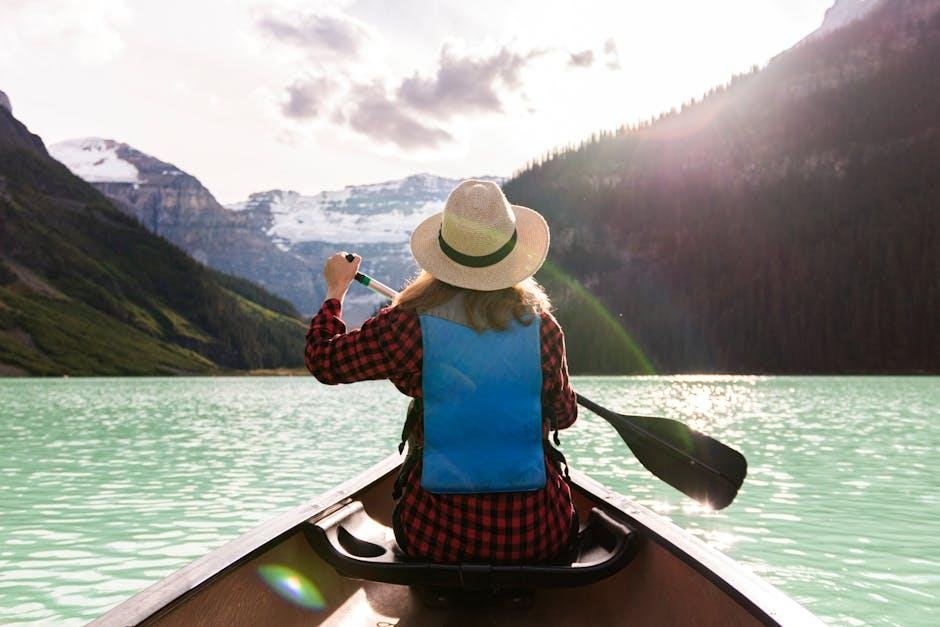When the sun peeks over the horizon, casting its golden glow upon tranquil waters, adventure enthusiasts find themselves drawn to the allure of paddling. For many, the choice between canoeing and kayaking can be as puzzling as deciphering the currents themselves. While both activities offer a chance to connect with nature and explore beautiful waterways, they each possess unique characteristics that beckon to diffrent types of adventurers. In this article, we will navigate the waters of canoeing and kayaking, highlighting the fundamental differences between these two popular pastimes. Whether you’re a seasoned paddler or a curious newcomer, understanding these distinctions can help you choose the right vessel for your next aquatic journey. So grab your paddle and let’s dive in!
Understanding the Craft: Key Features of Canoes and Kayaks
When delving into the world of paddling, understanding the distinct features of canoes and kayaks is crucial. Canoes typically boast a broad and open design, allowing for easy entry and exit, wich makes them ideal for a leisurely trip on calm waters. With higher sides and a flat bottom, they provide ample stability, making them suitable for families or for carrying gear on longer excursions. paddlers frequently enough use a single-bladed paddle, allowing for a more relaxed stroke and easy alternation between left and right sides of the canoe. The spacious interior can accommodate multiple passengers, making canoes versatile for various activities, such as fishing or recreational paddling.
In contrast, kayaks present a sleeker silhouette, designed for speed and agility on the water. These vessels often feature a closed cockpit, which keeps the paddler secure and dry, and they are typically narrower and lower in the water. The two-bladed paddle enhances efficiency with each stroke, promoting a quick and smooth navigating style. kayaks may come in various shapes and sizes—such as sit-in, sit-on-top, or inflatable models—targeting different paddling experiences ranging from whitewater adventures to serene lakeside excursions. understanding these key characteristics allows enthusiasts to choose between canoes and kayaks based on their personal preferences and intended paddling environments.

Paddling Techniques: Navigating the waters with Purpose
Mastering paddling techniques is essential for both canoeing and kayaking, as each discipline offers unique approaches to navigating through diverse water conditions. In canoeing, a solo paddler typically assumes a kneeling position or sits on a bench, utilizing a single-bladed paddle.This allows for powerful strokes that are adept at steering and maneuvering through shallow channels and rapid currents. Conversely,kayaking employs a double-bladed paddle,which provides efficiency and speed,making it easier to maintain a steady course over longer distances. Understanding the fundamental differences in stroke types—the J-stroke in canoeing versus the forward sweep in kayaking—can significantly enhance handling and control in each craft.
To truly excel in paddling, it is crucial to focus on both your body posture and stroke rhythm. The following techniques highlight essential practices for effective movement on the water:
- Maintain a low center of gravity: This improves stability and allows for better control.
- Use your core: Engaging your core muscles helps generate more power with less effort.
- Keep a relaxed grip: A loose grip on the paddle reduces fatigue and increases endurance.
Additionally, practicing in various weather conditions can enhance your overall competency and confidence on the water. By experimenting with different techniques and making adjustments based on your experiences, you will not only improve your paddling but also deepen your thankfulness for the nuances that differentiate canoeing from kayaking.

Choosing the Right Vessel: Considerations for Your Adventure
When embarking on your water adventure, the choice between a canoe and a kayak can significantly impact your experience.each vessel presents unique features that cater to different paddling styles and conditions. Consider the following factors to guide your decision:
- Purpose: Determine whether you plan to explore calm lakes, navigate rivers, or seek out whitewater challenges.
- Capacity: Think about how many people and the amount of gear you’ll take along. Canoes typically offer more space for passengers and equipment.
- Paddling Style: Different designs influence stroke style and efficiency. Canoes are frequently enough paddled in a more relaxed fashion, while kayaks encourage a more dynamic, low-to-the-water position.
- Weather and Water Conditions: Assess the environments you’ll face; kayaks are generally better suited for rough waters, whereas canoes excel in calm settings.
Furthermore, consider the ergonomics and stability of each option, as they can affect your comfort and confidence on the water. The following table summarizes key distinctions to keep in mind:
| Canoes | Kayaks |
|---|---|
| More open structure | Enclosed cockpit |
| Ideal for leisure and multi-passenger outings | Designed for speed and agility |
| Better for carrying gear | Greater maneuverability in rough conditions |

Exploring Environments: Best Uses for Canoeing and Kayaking
Canoeing and kayaking open up a world of adventure, offering enthusiasts the chance to explore stunning waterways that can range from tranquil lakes to challenging whitewater rivers. Each activity has its own unique advantages when it comes to navigating these environments. For instance,canoeing is particularly well-suited for leisurely trips with friends and family,making it perfect for scenic excursions along calm,winding rivers or quiet lakes. its spacious design allows for accommodating gear, ideal for extended trips or fishing expeditions. In contrast,kayaking shines in more dynamic settings,where its agility can handle swift currents and tight turns,making it the go-to choice for those looking to tackle rapids or explore coastal areas with intricate shorelines and islands.
When considering the best scenarios for each activity, both canoeing and kayaking have distinct advantages. Below are some quintessential environments for each water sport:
| Activity | Best Environments |
|---|---|
| Canoeing |
|
| Kayaking |
|
Final Thoughts
while both canoeing and kayaking offer adventurous pathways to explore the beauty of nature and the thrill of water sports,they each possess unique characteristics that cater to different preferences and experiences. Whether you prefer the open, spacious feel of a canoe or the agile maneuverability of a kayak, each activity invites you to embrace the serenity of the water. As you embark on your aquatic adventures, consider the nuances we’ve explored; with the right choice, you’re bound to create lasting memories on the water. So grab your paddle, choose your vessel, and set sail into the horizon of your next adventure—each stroke tells a story waiting to be discovered. Happy paddling!
